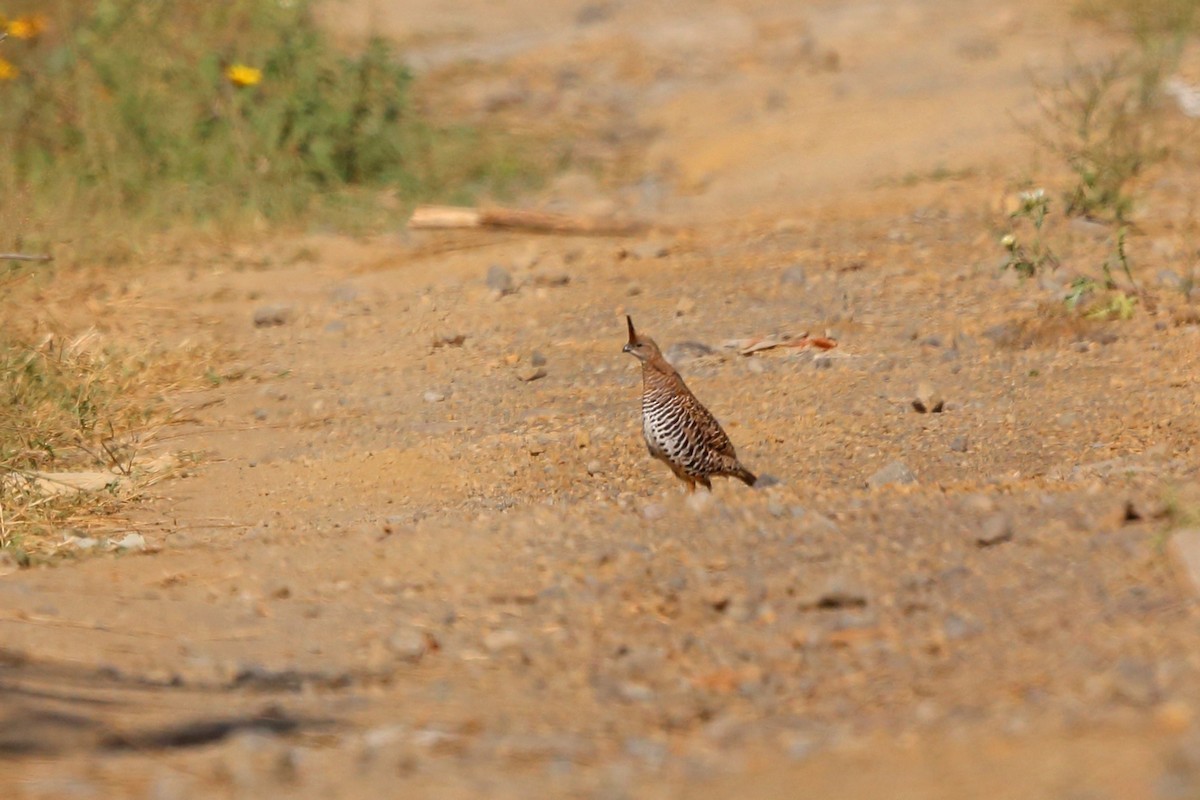Banded Quail
A species of Banded Quails Scientific name : Philortyx fasciatus Genus : Banded Quails
Banded Quail, A species of Banded Quails
Botanical name: Philortyx fasciatus
Genus: Banded Quails
Content
Description General Info
 Photo By Nigel Voaden
Photo By Nigel Voaden Description
The banded quail is an inconspicuous brown bird with a comparatively long tail. It has a dark crest on its head, its throat is pale and its under tail-coverts are barred in black and white. The juvenile plumage is streaked with white at first but after a moult at eight to twelve weeks the plumage is similar to that of the adults apart from a nearly black face and throat. The full adult plumage develops at sixteen to twenty weeks. 
Size
21 cm
Nest Placement
Ground
Feeding Habits
Banded Quail predominantly feeds on insects, nuts, and various plants. They forage on the ground using a scratching technique. Unique to banded Quail is a preference for certain seeds, showcasing specific dietary adaptations.
Habitat
The banded Quail's habitat consists of dry, scrubby landscapes, with arid thornscrub and savanna being prominent. These areas are typically dotted with drought-deciduous shrubs, spiny trees, and cacti, with Acacia and mesquite trees being significant. Environmental conditions include regions with annual rainfall between less than 400 mm to 450-600 mm, mostly between May and September.
Dite type
Omnivorous
General Info
Feeding Habits
Bird food type
Behavior
The banded quail is a ground-dwelling bird usually found in groups of about a dozen birds although sometimes larger groups of up to thirty are seen. It is a shy bird that seldom strays far from cover. When alarmed, it tends to run rather than fly, but when a group take to the wing, the individuals fly off in different directions which may confuse a potential predator. It feeds on a variety of seeds and on tubers, buds and insects, increasing the proportion of animal food when there are chicks to be fed. Breeding takes place between August and September and the crest is used during display behaviour. About five eggs are laid in a grass-lined nest that may be partially roofed and the incubation period is about twenty two days. 
Distribution Area
The banded quail is endemic to western central Mexico where its main habitat is dry scrubby countryside with shrubs but it also sometimes moves onto cultivated land and pasture. It is commonest in the region bordering on the Balsas River. Its height range is from sea level up to about 1,800 metres (5,900 ft) and it is a non-migratory species. 
Species Status
The banded quail is found over a range of about 90,800 square kilometres (35,100 sq mi) and the total number of individual birds is estimated to be somewhere between 50,000 and 500,000. The bird is hunted for food but the population size seems to be stable and the bird faces no other particular threats so the IUCN has listed it as being of "Least Concern" in its Red List of Threatened Species. 

 Photo By Nigel Voaden
Photo By Nigel Voaden